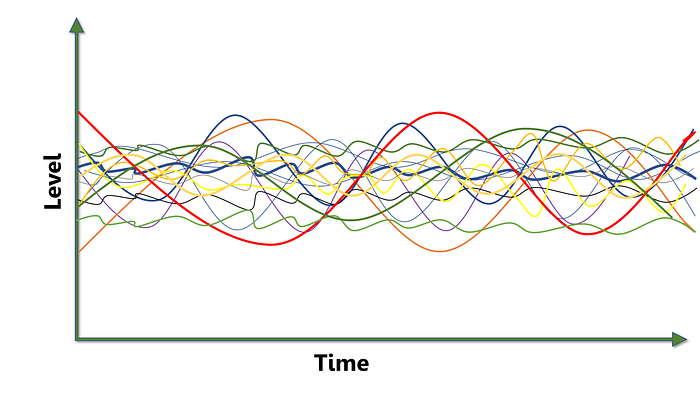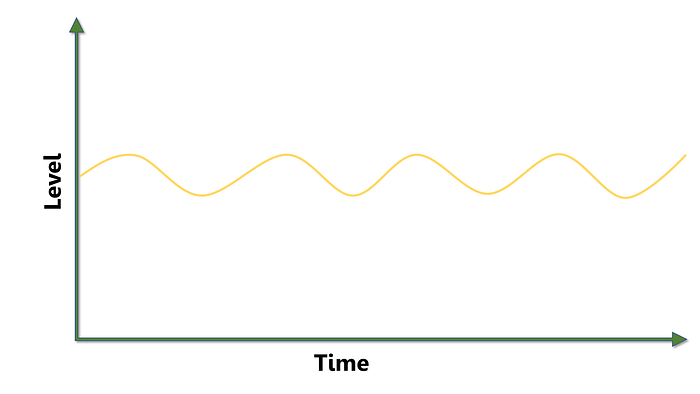Sarah, a marketing executive, sat at her desk, overwhelmed by options as she searched for innovative strategies for her new product launch. With a quick Google search, her screen flooded with articles, videos, and AI-generated suggestions — each promising the ultimate solution. Initially excited, Sarah soon felt paralyzed by the sheer volume of choices.
The quality of your decisions is directly related to the quality of your options. Decision-making doesn't suffer from a lack of options but from an abundance. The ease of collecting information creates the problem of a glut of possibilities. How do we winnow this down to a few of the quality options to choose from?
In communication and leadership, the concept of "signal vs. noise" is a powerful metaphor for how we process information, make decisions, and solve problems. In essence, the signal represents the essential, valuable information needed to guide us toward the best outcome, while noise refers to all the distractions, irrelevant details, and background chatter that muddy our judgment. Learning to distinguish between the two is critical for leaders, facilitators, and decision-makers who strive to cut through complexity and lead with clarity.
In today's data-driven world, we are constantly bombarded by overwhelming amounts of information. Not all of it is helpful, and the sheer volume can often cloud our ability to focus on what's truly important. By honing in on the signal — those key pieces of actionable and impactful information — we can eliminate distractions and make more informed, effective decisions.

Understanding Signal and Noise
The signal refers to the most critical and relevant data points that help guide decision-making. Noise, on the other hand, is the excess — the irrelevant information, the misdirection, and the distractions that pull us away from the core issue at hand. In leadership, the challenge lies in not just receiving information but discerning which parts are the signal and which are the noise.
Leaders, facilitators, and decision-makers often struggle with noise because it can appear in many forms. It could be in the form of feedback that, while well-intentioned, is unrelated to the core problem. Extraneous data might cloud our ability to focus on what's actionable. Or it could be internal distractions, like stress, anxiety, or competing priorities, that prevent us from making clear decisions.
The consequences of focusing too much on the noise can be damaging. It leads to confusion, missed opportunities, and decisions that don't address the heart of the problem. Leaders can find themselves bogged down in irrelevant details, wasting time and energy, and ultimately steering their teams in the wrong direction. The cost of focusing on noise rather than signal can mean the difference between success and failure.
Strategies for Amplifying the Signal
To effectively separate signal from noise, developing strategies that help clarify your focus is essential. Here are a few ways to amplify the signal in your decision-making process:
- Paint a Picture of Success — Clarify Your Objectives Start by defining what you are genuinely aiming to accomplish. Clear objectives create a lens through which you can filter the information you receive. When you know exactly what you're trying to achieve, it becomes easier to determine which pieces of information are useful and which are distractions. This clarity helps you stay grounded, preventing the pull toward irrelevant details.
- Be Present — Active Listening One of the most effective ways to cut through the noise is to be present and practice active listening. This means fully engaging with those you're communicating with — whether it's your team, stakeholders, or even yourself. When we listen actively, we are better equipped to capture the critical information that matters and set aside the less useful parts. This skill requires practice and intention but can profoundly impact your ability to pick up on essential signals.
- Be Guided by the Pareto Principle The Pareto Principle, or the 80/20 rule, can be a helpful guide when focusing on what matters most. In decision-making, 80% of your results often come from 20% of your efforts. By applying this rule, you can focus on identifying the most crucial 20% of the information that will drive most of your outcomes, allowing you to tune out the other 80% of noise.
- Limit Information Overload In today's hyperconnected world, we are bombarded with a relentless stream of information, much of which is unnecessary. One way to cut through the noise is by limiting the amount of information you take in. This could mean reducing the meetings you attend, curating the news you consume, or setting boundaries for how you engage with digital communication. Limiting your noise exposure creates space for the signal to emerge more clearly.
- Trust Your Intuition Noise can often cause doubt and uncertainty, making it harder to trust your instincts. However, trusting your intuition is a powerful tool in amplifying the signal. When faced with a decision, your gut feeling often serves as a filter for what's truly important. Developing confidence in your instincts can help you cut through the noise and make decisions with clarity and conviction.

Avoiding the Pitfalls of Noise
While amplifying the signal is crucial, it's equally important to be mindful of the pitfalls that noise can present in the decision-making process. Here are a few common traps that leaders can fall into:
- Analysis Paralysis When bombarded by too much information, it's easy to fall into "analysis paralysis." This is when we overanalyze a situation to the point where no decision is made. To avoid this trap, remember that not all information is equally important. Practice prioritizing the key data points and making decisions even when all the information is imperfect.
- Decision Fatigue Another consequence of excessive noise is decision fatigue. When constantly exposed to irrelevant details, we expend mental energy filtering through them, leaving us tired and less capable of making good decisions later on. To combat this, focus on making fewer, higher-quality decisions each day. By reducing the noise you engage with, you preserve mental energy for the decisions that truly matter.
- Confirmation Bias Noise can also manifest as confirmation bias — seeking information that reinforces our pre-existing beliefs. To avoid this, practice looking for alternative perspectives and actively challenge your assumptions. By deliberately seeking out diverse viewpoints, you ensure that your decisions are based on a broader understanding of the situation, not just the noise that aligns with your current thinking.
Leading with Clarity and Purpose
Distinguishing signal from noise allows leaders to lead with clarity, focus, and purpose. It's not about shutting out all distractions but learning how to navigate them effectively. Leaders who excel at this are better equipped to make sound decisions, confidently guide their teams, and achieve meaningful results.

Sarah Finds Clarity
Faced with the overwhelming task of filtering through noise, Sarah struggled to clarify her objectives and apply the Pareto Principle. Each piece of information seemed equally important, leading to doubt and confusion. Through persistent effort and collaboration with her team, she learned to trust her instincts and focus on the most relevant data. This challenging journey not only helped her overcome analysis paralysis but also empowered her to make a confident decision that ultimately resulted in a successful marketing campaign.
In today's information-rich world, distinguishing signal from noise is crucial for effective leadership and decision-making. The key lies not in accumulating more information but in identifying what truly matters. We can focus on signals that drive meaningful outcomes by implementing strategies like clarifying objectives, applying the Pareto Principle, and leveraging collective intelligence. Remember, it's about developing discernment, not eliminating all noise.
Challenge yourself to apply these principles in your daily decision-making:
- Clearly define objectives
- Focus on the vital few using the Pareto Principle
- Engage in active listening
- Trust intuition, but verify with data
- Regularly reflect and refine your process
By practicing these techniques, you'll make better decisions and create a more focused work environment. Remember, progress, not perfection, is the goal. What's the first noise you'll tackle? Your journey to clearer, more impactful decision-making starts now.
Do you want to learn more about improving your judgment and decision-making? Contact IntoWisdom today
Learn more about Quality Thinking.
(All images by Adobe Stock, Pexels, and John Losey)

